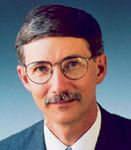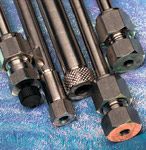LC Troubleshooting: The Basics
LCGC North America
This month's "LC Troubleshooting" is aimed at those who are just starting out in the liquid chromatography business, as John Dolan presents some helpful tips.
This month's installment of "LC Troubleshooting" is meant for those of you who are just starting out in the liquid chromatography (LC) business. After you've been working with LC for a few years, some of the techniques you use for troubleshooting will become second nature. You won't even think about them. The key to solving LC problems, just like most other problems, is to break the puzzle into smaller pieces until you get to the heart of the matter — the root cause of the problem. This month, we'll look at some simple techniques to size up the problem so you can work at correcting it.

John W. Dolan
Divide and Conquer
This is the first concept of troubleshooting — do some simple experiments that divide the problem into large segments. With this technique, the aim is to quickly eliminate many possible problem sources so that you can focus on what really is wrong. A troubleshooting guide, such as the one in Table I, will help you navigate the process. In this case, there are two major classifications of problems: visual symptoms and failed performance tests. Once you've figured out into which area your problem falls, you can proceed with more specific symptoms. It might not be necessary to actually run additional tests — the existing symptoms might be sufficient to classify the problem. Each step you take to more closely define the problem usually eliminates many other problems from consideration. Of course there are problems that are inter-related, such as leaks and pressure. Let's look at the strategy outlined in Table I in a little more detail.

LC Troubleshooting
Visual Symptoms — Pressure
When nearly any LC problem appears, the first step is to take a careful look at the system's pressure readout and the plumbing of the system to determine if there is a pressure problem or visible leak. Pressure-related problems will give a low, high, or cycling pressure readout. (It should be obvious why it is a good idea to record the normal operating pressure as a reference each time a method is run.)

Table I: LC Troubleshooting guide
Low pressure most commonly is caused by a bubble in the pump, causing that the pump to deliver less mobile phase than it should. Leaks are probably a close second behind bubbles as a cause of low pressure, so it is a good idea to do a careful check of all the system plumbing for leaks before going further. Bubbles can be removed by degassing the mobile phase, then purging the pump to drive out trapped bubbles. Leaky check valves also can result in low pressure. These often can be cleaned by sonicating for a few minutes in methanol or they can be replaced with new check valves. Replace one check valve at a time and check the results. Once you have identified the bad check valve, put all the other used ones back in place so you don't throw out good parts. (It is a good idea to replace the original parts whenever a substituted new part does not change the observed problem symptoms.) Check-valve failure can be reduced by filtering the mobile phase through a 0.5-μm or smaller porosity membrane filter. Pump seal leakage also can account for low pressure, and often is accompanied by liquid dripping out of the drain hole at the rear of the pump head. Pump seals last 6–12 mos under normal wear conditions, but can have much shorter lifetimes under high-salt conditions. And don't overlook the silly causes of low pressure, such as the wrong flow rate setting or an empty solvent reservoir.
High pressure almost always means that some part of the system is blocked or partially blocked. High pressure might be accompanied by leaks if the pressure exceeds the capability of a fitting to hold the seal. The most common blockage points are the 0.5-μm porosity in-line filter mounted just downstream of the autosampler or the frit at the head of the guard column or analytical column. Usually, the first frit in the flow stream will become blocked. A simple way to verify a blockage is to loosen the fitting just downstream from the suspected blockage, with the flow on (don't forget your safety glasses). Then loosen the fitting just upstream from the suspected blockage. The pressure should drop to normal when the second fitting is loosened. Remember that the column normally has a significant pressure drop, so take this into account when fittings are loosened. If the in-line frit or guard column is blocked, replace it. Sometimes a column can be reversed to displace the junk on the frit, but it is wise to check with the care-and-use instructions to be sure this is allowed for your particular column. Otherwise, a new column is recommended. Blockages result from the accumulation of debris from the solvents, the samples, or wearing seals in the system. Filtering the solvents and samples before use will delay the buildup of junk on the frits. Thoroughly flushing buffers from the system before shutdown will reduce seal wear. Once again, don't forget to check for an improper flow rate setting as a possible problem source. If PEEK fittings are in use, it is a good idea to turn off the pump, loosen, reseat, and tighten each fitting when a pump overpressure occurs (for example, more than 4000 psi) to ensure that a fitting hasn't slipped, creating undesirable extracolumn volume in the system.
Cycling pressure is the most common symptom of a bubble in one of the pump heads, followed closely by a dirty check valve. Often a bubble will get caught in just one pump head and you can watch the pressure fluctuate in phase with the pump cycle. Degas the solvent and purge the pump. Dirty check valves can be cleaned or replaced, as discussed earlier.
Visual Symptoms — Leaks
Leaks are one of the most obvious symptoms; either a leak sensor goes into alarm state or a puddle or drip is observed. First, check for high pressure and fix its cause before worrying about a leak. All fittings will leak if the pressure gets high enough. If no pressure problems are observed, just tighten the fitting a 1/4 turn and see if the problem is fixed. With PEEK fittings, as mentioned earlier, leaks are best fixed by shutting off the flow and reseating the tubing. If the leak is not corrected with a 1/4–1/2 turn on the nut, disassemble the fitting and rinse it out. If it still leaks after re-tightening, replace the ferrule. Worn pump seals or injector rotor seals also can result in leaks. Consult the operator's manual for directions on replacement of the seals for your equipment.
Failed Performance Tests — System Suitability
Once the visual problems have been eliminated as problem sources, you are left with problems related to system performance. For routine analysis, most methods use a system suitability test to verify that the method is ready to use. If you don't have a system suitability test, you can simulate one by running a mock sample or standard. Often, the failure is related to retention time, peak shape, or pressure.
Retention-time problems most commonly are related to changes in the system chemistry, but don't overlook leaks, bubbles, or check-valve problems, as discussed. Any flow-related problem also will affect retention. Mobile phase composition problems can be the result of pump problems if on-line mixing is used. An abrupt change in retention to shorter or longer times can be the result of improper mobile phase formulation. Simply prepare a new batch of mobile phase to check this problem source. Column failure usually is over hundreds of samples, often over weeks or months of time. Column-related retention problems also tend to change in one direction gradually (larger or smaller retention times) as the column ages. Column replacement should correct this problem source.
Peak shape problems usually are a sign of an aging column. Check this by substituting a new column for the old one. (You can see that substituting a known good part for a suspect one is a powerful troubleshooting tool.) Peak shape problems also can result if the mobile phase pH is not correct, or if a tail-suppressing additive is omitted from the mobile phase. Often, this source will generate different retention times, too. A fresh batch of mobile phase should clarify any suspicions of bad mobile phase. Injection of too much of too strong a solvent also can distort peaks — inject a smaller volume to see if this fixes the problem. A blocked frit can distort peaks as well, but usually is accompanied by a pressure rise.
Pressure problems with system suitability are no different from any other pressure problems. These should be addressed as discussed earlier.
Other problems related to system suitability may be specific for the method in use. Check the method document for information. At this point, many of the simple solutions have been tried or eliminated. It is time to run the new column test.
If system suitability passes, this usually means that there are no problems with the system. It should be suitable for running the method. However, there might be other symptoms that indicate there are problems, even when the system suitability test passes. Look carefully through Table I to see if the problem can be classified in another way that will lead you to a solution. If all else fails, run the new column test.
Failed Performance Tests — New Column Test
One of the big questions that is common in LC troubleshooting is, "Is the equipment or the method at the heart of the problem?" The new column test is designed to answer this question. Just put a new column on the system, or one that is known to be good. Run the column manufacturer's test conditions. This usually is a methanol–water mobile phase with some test compounds such as uracil, toluene, and methyl benzoate. If you can get retention times and column plate numbers that are within approximately 10% of the manufacturer's test, this tells you that the equipment is performing properly. Therefore the problem must be related to the method. If the column test fails, the problem is related to the equipment. For this test to be valid, you must know that the system will pass the column test when it is operating properly. So it is a good idea to run the test when the LC system is first installed, then occasionally (for example, every 6–12 mos) to ensure everything is working as desired. If the column test fails, consult the equipment manuals for instructions on testing the performance of each part of the system.
Conclusions
This quick overview of LC troubleshooting is by no means a complete do-it-yourself guide to problem solving. I've written a book on the topic (1) and a monthly installment of this column for 22 years, so this is just a broad-brush treatment. However, if you practice the principle of dividing the problem into manageable pieces, you will be able to isolate the problem source quickly. Once the root cause of the problem is identified, fixing it by repair or replacement should be straightforward. The practice of substituting a known good part for a questionable one is a powerful way to identify the cause of a problem quickly. Don't forget to replace the original part if the substituted part doesn't make any difference. There is no sense in throwing away perfectly good parts.
John W. Dolan "LC Troubleshooting" Editor John W. Dolan is Vice-President of BASi Northwest Laboratory of McMinnville, Oregon; a Principal Instructor for LC Resources, Walnut Creek, California; and a member of LCGC's editorial advisory board. Direct correspondence about this column to "LC Troubleshooting," LCGC, Woodbridge Corporate Plaza, 485 Route 1 South, Building F, First Floor, Iselin, NJ 08830, e-mail John.Dolan@Bioanalytical.com
References
(1) J.W. Dolan and L.R. Snyder, Troubleshooting LC Systems (Humana Press, Clifton, New Jersey, 1989).

Common Challenges in Nitrosamine Analysis: An LCGC International Peer Exchange
April 15th 2025A recent roundtable discussion featuring Aloka Srinivasan of Raaha, Mayank Bhanti of the United States Pharmacopeia (USP), and Amber Burch of Purisys discussed the challenges surrounding nitrosamine analysis in pharmaceuticals.













